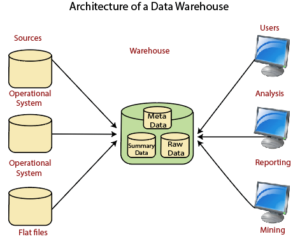Data integration refers to the process of combining data from multiple sources into a unified and consistent format. Imagine you have different filing cabinets across your company, each holding information relevant to a specific department. Data integration is like bringing all that information togeRead more
Data integration refers to the process of combining data from multiple sources into a unified and consistent format. Imagine you have different filing cabinets across your company, each holding information relevant to a specific department. Data integration is like bringing all that information together into one central, organized filing system.
Here’s why data integration is crucial for data analysis:
- Unified View: It provides a complete picture by merging data from various sources. This allows analysts to see connections and trends that wouldn’t be evident in isolated datasets.
- Improved Data Quality: By combining data, inconsistencies and errors become more apparent. Data integration helps clean and standardize the data, leading to more reliable results in your analysis.
- Enhanced Insights: With a broader range of data, analysts can uncover deeper insights that would be missed by analyzing individual datasets. This can lead to better decision-making across the organization.
- Streamlined Analysis: Data integration eliminates the need to switch between different data sources and manually manipulate data. This saves time and allows analysts to focus on the actual analysis and interpretation of the data.
In essence, data integration acts as the foundation for strong data analysis. It ensures the data you’re working with is comprehensive, accurate, and ready to reveal valuable insights.


Data preprocessing is an important first step in turning random data into actionable information. Eliminate problems such as noise, redundancy, and incompleteness to prepare data for analysis, machine learning prototyping, and other data processing activities The main objectives of data preprocessinRead more
Data preprocessing is an important first step in turning random data into actionable information. Eliminate problems such as noise, redundancy, and incompleteness to prepare data for analysis, machine learning prototyping, and other data processing activities
The main objectives of data preprocessing are:
1. Cleaning: Errors, inconsistencies and inaccuracies are removed from the data to ensure quality.
2. Conversion: This stage converts the data into a format that is appropriate for the planned research in terms of size, structure and methodology.
3.Integration: Combining data from multiple sources produces homogeneous and complete data.
The purpose of data preprocessing is to improve data quality, increase data accuracy, and prepare data for subsequent analysis or processing. By ensuring that data is properly organized, accurate, and complete, data prioritization maximizes the success of data-driven businesses.
In summary, data preprocessing transforms raw data into a clean and organized data set, ready for further analysis, modeling, or other application tasks. Proper implementation is essential for data-driven businesses to produce reliable and meaningful results.
See less